Haunted houses in the hills, the dark woods, psychiatric hospitals, windswept moors; all of these isolated settings escalate the sense of terror and dread in tales of suspense. Yet, it is not geographical isolation alone that makes our hearts pound and sweat trickle down our backs as we anxiously turn the pages. Mental and emotional isolation figure as well, and in some of the most terrifying suspense novels, all three forms of isolation come into play. Here are my eight favorite tales that heighten suspense by isolating their characters from the world.
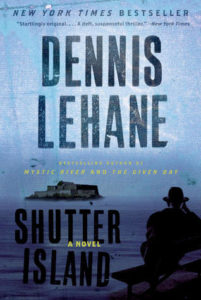
Dennis Lehane, Shutter Island
The two settings in fiction that create the greatest sense of isolation are the island and the psychiatric facility. Each setting fosters an atmosphere of intense dread and claustrophobia by cutting the protagonist, and the reader, off from the outside world. Lehane’s novel delivers both settings in spades. It also takes place in 1954, an era when unreliable communication with the mainland deepens the island’s sense of remoteness.
In the vein of classic B-movies, U.S. Marshal Edward “Teddy” Daniels visits the remote island believing he’s investigating the disappearance of patient Rachel Solando, who managed to escape from her locked room in the island’s Ashecliffe Hospital for the criminally insane. But is this the reason why he’s really there? Is Daniels even who he believes he is? In a slippery and ingenious plot that pays homage to the is he insane or not theme, Shutter Island leaves the reader feeling there is no way to escape the island, or the hospital, just as there is no way to escape our own minds.
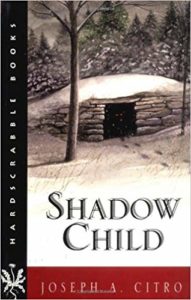
Joseph Citro, Shadow Child
Set deep in the remote woods of Vermont, this novel is dear to me in many ways. I read it when it first came out in the late 1980s. A true “tale” of suspense and horror, it is as gripping a novel as any by King or Koontz. Penned by the Vermont author renowned for his knowledge of the state’s supernatural history, lore of hauntings, and ancient ruins, Shadow Child is set in the “Bennington Triangle.” These remote and mysterious woods actually exist in real life, and are home to the ghost town of Glastenbury, known for numerous unsolved disappearances over many decades. The book is a classic creepy tale that reads, in the very best sense, like a campfire story, full of chills, mystery, and strange disappearances. I am more fond of this book than ever, as I happen to be able to see those haunted woods in the distance from my kitchen window. Shadow Child will soon be re-released in a handsome hardcover edition.

Edgar Allan Poe, “Cask of the Amontillado”
While the carefree revelers on the streets of an Italian city celebrate Carnival, we dear readers join murderer Montresor and his victim Fortunato in the catacombs below—proving that isolation need not be as geographically remote as a house deep in the woods. Indeed, the dread of isolation can be heightened when the person who is in danger is mere feet from safety. In this tale, the catacombs might as well be miles from the partygoers, what with its claustrophobic and terrifying atmosphere. The only place more remote than these dank tunnels in the entire city is the small space behind a brick wall where poor Fortunato remains chained and entombed to this day.

Hakan Nesser, The Living and the Dead in Winsford
Nesser’s novels rank among my all-time favorites. I have read every novel in his Van Veteeren series, some several times. In this stand-alone, The Living and the Dead in Winsford, a woman abandons her identity after murdering her husband and flees for the secluded, foggy moors of Winsford. While there, she dwells in a small stone hut and walks the desolate, windswept moors, sometimes in the dark heart of night. Peculiar events transpire and her new identity starts to unravel. All that desolation and loneliness. All that incredible, slow-burning suspense. All that eerie fog! This is a masterful tale. It’s not just set in a place of isolation; it examines the effects of isolation on the individual’s psyche and identity.
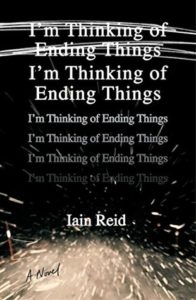
Iain Reid, I’m Thinking of Ending Things
Iain Reid’s masterful debut novel, I’m Thinking of Ending Things, shows that the mind can be the most isolated place of all. Combine that with a road trip in a cramped car driving through barren farmland in remote Canada, in winter, at night, and you’ve got a quadratic formula for some serious isolation that only Reid could crack. This is one of my favorite novels of all time. The tension and suspense is astonishing, so much of it due to the author penning a character who has tried to survive in the isolation of his mind far too long, all while longing for nothing more than to escape that mind and the existence in which it has trapped him.
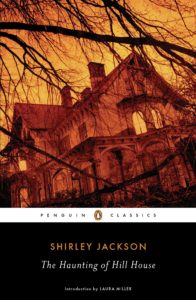
Shirley Jackson, Haunting of Hill House
A haunted house stands ‘by itself against its hills’ and is deemed ‘not sane’ in just the second sentence of this legendary classic. The book instantly sets up the 80-year-old mansion as a place apart, a place that might even be ‘alive.’ The book delivers on its promise of perhaps supernatural events taking place in that remote mansion, in part with vague suggestions and particularly with its mysterious and ambiguous ending. Part “The Fall of the House of Usher,” part The Turn of the Screw, The Haunting of Hill House is an enduring classic for many reasons, not the least of which is its isolated locale and forbidding atmosphere.
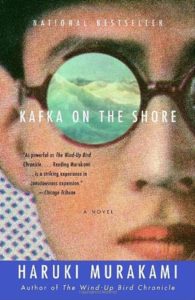
Haruki Murakami, Kafka on the Shore
In this novel, 15-year old Kafka Tamura will, in his own words, “run away from home, journey to a far-off town, and live in a corner of a small library.” While he secrets himself away in the library, he also learns of odd events that happened in the nearby woods and fields during World War II, and continue to this day. Taut with a psychological and metaphysical suspense that keeps the reader unmoored, the unsettling feeling I get when I read this novel stems first from Kafka’s emotional isolation from so much of what transpires. To me, Kafka is sensitive, yet removed from his own life in the way of Camus’ Meursault or Franz Kafka’s own Josef K. It is his peculiar emotional isolation that escalates the suspense of this wonderful, mesmerizing novel.

Agatha Christie, And Then There Were None
The classic of classics for isolated settings, and one of the most influential suspense stories of all times, And Then There Were None is not just set in an old mansion; it’s set in an old mansion on a remote island. Christie cleverly created this setting—from which none of her characters can escape—to heighten tension. In some ways, And Then There Were None is not only one of the best remote-locale mysteries of all time, but it also helped to spawn several sub-genres of suspense, crime and even horror stories. Think of a certain 1980s horror film with a high body count and a killer murdering victims in ever inventive ways while seeking revenge in the isolated woods near a lake. Yep. It’s not too far a stretch to say Lady Agatha helped inspire the creation of the Friday the 13th.

















